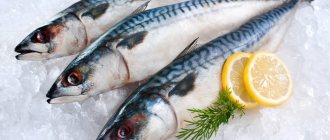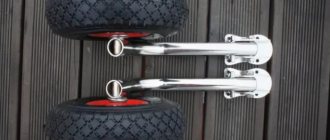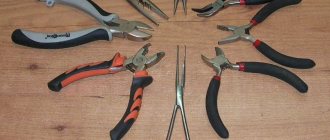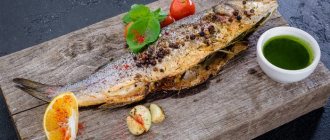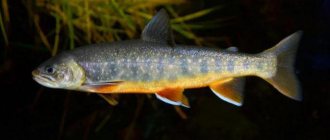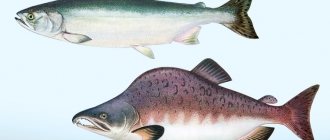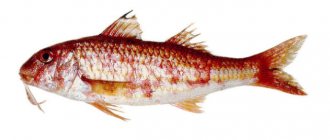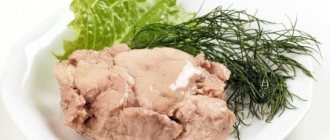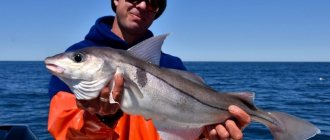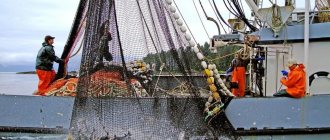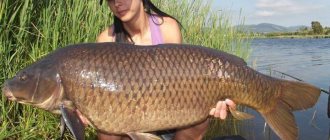Features of fishing on the White Sea
The tide changes twice a day to low tide. The tide level generally does not exceed two to three meters, only in areas leading out to the Barents Sea their height can reach seven meters. The most suitable time for fishing is the period from the middle to the end of the first half of low tide. During this period, the fish swim most intensively to the shore.
Fishes of the White Sea are distributed unevenly. The size of marine inhabitants, as well as plants, is rapidly decreasing in highly desalinated bays, such as Onega, Mezen and Dvina. There are no fish typical for the seas here. Nevertheless, a large number of marine fish species live off the northern shores of the White Sea, as well as in the Kandalaksha Bay, where the water is usually saltier.
White Sea
The White Sea is located in the north of the European part of Russia. It is the internal waters of the Russian Federation and belongs to the Arctic Ocean. The White Sea is separated from the Barents Sea by a line that is located between the extreme points of Cape Kanin Nos and Cape Svyatoy Nos. The sea got its name from the white color of the snow-covered ice that covers the waters most of the year. Also at different times the sea bore the names Studenoye, Severnoye, Solovetskoye or White Bay. The White Sea is mentioned in Scandinavian mythology, where it is called Gandvik or Bay of Snakes for its special curved coastline. In size, only the Sea of Azov is smaller than the White Sea. The area of the White Sea is 90 thousand km 2, the average depth is 63 m, the maximum is 343 m. The eastern shores of the sea are low-lying, steep in the west. The bottom of the reservoir is covered with a mixture of sand, gravel and shell rock. The basin is dominated by fine-grained clayey silt, which has a brown tint. Such large rivers as Onega, Northern Dvina, Mezen, Kem, Ponoy flow into the White Sea. Through the White Sea-Baltic Canal it connects with the Volga-Baltic and Baltic waterways. The sea area is divided into parts, each of which has its own name. There are Onega, Dvina and Mezen Bays, Gorlo (the strait that connects the White and Barents Seas), Voronka and the Kandalaksha Strait. The same is true with the banks, each of which has historically had its own traditional designation. Numerous groups of islands have their own names. The most famous of them are the Solovetskys. On large islands there may be small rivers and streams with fresh water, lakes. In summer, some streams may dry up. Fishing huts can be found on many islands.
There are ebbs and flows here, which are semi-diurnal in nature. The average tide height ranges from half a meter to three, in some places reaching almost 8 meters. A tidal wave along the rivers flowing into the sea can penetrate up to a distance of 100 km. And on the Northern Dvina up to 120 km. During a tidal wave, the water level in the river rises and then suddenly stops. After some time, the water level in the river may continue to rise. This phenomenon is called “colossus”. 6 hours later, as the tide begins to ebb, the water level in the river also decreases. Storms on the White Sea are quite common, especially in the autumn months. Wave heights during storms can reach 6 meters. In the cold season, surge phenomena reach a value of 75-90 cm.
Advantages of recreation and fishing on the White Sea
The north has always attracted fishermen. There are a large number of different travel agencies offering fishing on the White Sea islands. It is considered the most convenient for a stay, thanks to developed transport links and relatively insignificant distance. This sea is quite harsh and lies under ice cover for almost the whole year. But, despite the low temperature, it is home to a large number of fish. In deep places in summer and winter the temperature is almost the same, but for representatives of the deep sea this is not significant. On the coast there are high cliffs, deciduous and coniferous forests, and the sea air makes this place very tempting.
Fishing at sea usually takes place in large bays located at the mouths of rivers that flow into the sea. Numerous fish from the White Sea swim directly to these places, which are rich in food. Some species come to spawn in rivers. A successful catch at sea is only possible from boats, boats, and yachts.
The flora and fauna of the sea are very diverse. They are represented by numerous species of plants, invertebrates and fish that live close to the shore at a depth of about thirty meters, which facilitates such activities as sport fishing.
All about sharks
In total, there are 1,570 species of ichthyofauna and about 200 species of various algae in the White Sea.
The shores of the White Sea in many places are bare cliffs (especially in its northwestern part), favored by numerous birds. Noisy bird colonies are often located here - places where huge colonies of various species of seabirds nest together. In the warm season, eiders, guillemots, arctic terns, great cormorants, herring and sea gulls, kittiwakes and other seabirds that are associated with land only during the period of reproduction of offspring fly here to nest. They feed on sea fish and animals and often spend the night right on the water. Many of these birds travel considerable distances to reach nesting and feeding grounds on the White Sea coast. The greatest travelers in the animal world of the planet are considered to be Arctic terns, which spend the summer in the north of Eurasia and North America, and fly to Antarctica for the winter, covering up to 30 thousand km per season, i.e. almost circling the globe.
The foot of the rocks extending into the water is the kingdom of invertebrates. In terms of beauty and picturesqueness, these places can be compared to the coral reefs of the southern seas. By the way, corals also live in the White Sea, for example, Bunodactis stellata and Gersemia fruticosa. They differ from tropical corals in that they do not form hard calcareous skeletons from which the famous coral branches of the southern seas are built. In total, the bottom fauna of the White Sea includes more than 700 species of animals.
Among the representatives of the coelenterates of the White Sea, various types of jellyfish should be noted, including the giant cyanea, horse anemones, and metridiums. On the surface of the rocks live not only coelenterates, but also various sponges, ascidians, sea stars (crosaster, pteraster, urasteras, etc.), as well as brittle stars, which differ from sea stars in their snake-like rays. These places are also favored by numerous sea urchins and crustaceans.
Among the wide variety of mollusks, several species of mussels (bivalves), gastropods, pteropods and even cephalopods can be noted. Various species of marine worms are numerous in the coastal zone of the White Sea. Below one and a half hundred meters the White Sea pseudo-abyssal begins, where there is almost no light and vegetation, the temperature and salinity of the water level out. The fauna here is less richly represented than in the upper layers. Only some mollusks and jellyfish, as well as some species of arctic fish (ulcinus, leptagon), take root on clayey and silty soils.
Among the mammals that have settled in the waters of the White Sea, harp seals (ringed seals, bearded seals) and beluga whales should be noted. Lahtaki are the largest seals living in Russian waters.
The fish world of the White Sea is poorer than its northern neighbor - the Barents Sea. 68 species of fish live here, of which 56 are marine and 12 are anadromous and semi-anadromous. In the White Sea they fish for cod, cod, several species of herring, catfish, navaga, flounder, and sea bass. It should be noted that in recent years, sea bass populations here have greatly declined due to active fishing and the weak reproductive capacity of these fish. In the coastal zone you can find billfish and butterfish (Atlantic species of fish of the order Perciformes), similar to sculpin gobies, lumpfish (sparrow fish), scorpionfish, beaked fish, smelt, capelin, various types of sea bass, and whitefish. Fishing for smelt from ice is very popular among local fishermen. In winter, you can see thousands of fans of this kind of fishing on the ice of the sea. Whitefish fishing is also an exciting sport.
A separate story about sharks found in the waters of the White Sea.
Among the permanent residents of the White Sea, one can note the ubiquitous katrans, or as they are called here, marigolds. This small shark lives in many Russian seas and is not a dangerous species for humans. About methods of catching katran - on this page.
Entries into the White Sea by one of the largest sharks, the giant shark, have been repeatedly recorded. This fish is a planktivorous species and is not at all dangerous to humans.
Herring sharks, which are a species potentially dangerous to humans, also occasionally swim from the Barents Sea. The White Sea is also part of the habitat of the polar shark, a resident of cold northern waters. The probability of seeing a polar shark in the sea is very low - this fish does not appear on the surface, preferring to stay in the depths. Polar sharks are caught by fishermen, however, as an object of sport fishing, they are not interesting - when fished out, they literally behave like a log, and the meat of this shark has a high urea content, so it requires serious processing before being eaten. This large shark is not a dangerous species to humans. A detailed description is here.
It should be noted that sharks are rare fish in the White Sea, so sport fishing for them is rare. Only on the border of the Barents and White Seas, as well as in the Mezen Bay, do sharks stay almost all year round, and often in large numbers. Sport fishing for sharks is very interesting, carried out with durable sports gear, using bait made from fish meat, seal and especially pieces of seal or other animal fat.
***
Next - a story about the Barents Sea
What is the appeal of fishing on the White Sea
Hunting for valuable fish species, such as brown trout and salmon, is very entertaining and interesting. These marine fish are found near bottom irregularities at shallow depths off the coast of the White Sea. Trout and salmon are migratory marine fish that live most of their existence in the ocean, and only go into rivers during spawning. During high tides and strong winds, they often approach the coastal zone. A high water level facilitates their numerous movements into or out of rivers, so this period of time is the most comfortable for fishing.
Trout and salmon bite well near most rivers, but it is best on the Tersky, Kandalaksha and Karelian banks. A strong spinning rod is perfect for them. The bait can be spinners with increased acoustics, as well as live bait, such as small fish, worms or shrimp. These types of fish have a developed sense of smell, so they use a variety of aromatic baits, for example, vegetable oils or liquid animal fats.
Hunting for nelma and flounder
When fishing on the White Sea, you can sometimes meet nelma, a fish of the salmon family. For most of its life, nelma lives in desalinated waters near the shore, where it feeds on small fish.
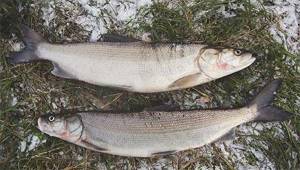
Nelma is a very cautious fish; it feeds mainly at night. The body length sometimes reaches 140 cm and weight 40 kg, however, as a rule, there are individuals up to one meter long and weighing up to 12 kg. The fish do not swim beyond the boundaries of the bays located at the mouths of rivers. You can fish with a spinning rod. Oscillating spoons and small fish are used as bait.
There are 5 species of flounder in the White Sea. Polar flounder, ruffed fish and river flounder are local fish and can be found almost throughout the sea. Ruff flounder and sea flounder swim from the Barents Sea in the summer to feed. Flounder fishing is carried out with ordinary fishing rods and small hooks. The bait used is Nereis, a sea worm that can be found on sandbanks.
Which place is best for fishing?
Some fish are better caught from the shore, others from a boat. Therefore, it is important to prepare in advance and know which fish is a priority. Despite the large area of the sea, it is best to fish close to the shore. The depth should not exceed 30 meters. But it is best to fish at a depth of 6-8 meters. Every fisherman knows that closer to the surface of the water there are fry and other small inhabitants of the river, which larger fish like to feast on.
The most delicious place for catching fish will be the confluence of rivers or lakes. In these places, fish most often spawn. Therefore, the catch will be decent. Also, places under rocks are very popular with fish. In them, the underwater world is more diverse and, accordingly, there is more prey. The most popular places for fishing are the Unskaya Bay of the White Sea, the Terek and Karelian shores. Fishing on the White Sea in 2017 made these places famous thanks to the rich catch of many fishermen.
Catfish hunting
The best place to hunt for catfish is fishing on the White Sea in Kandalaksha, or more precisely, in Kandalaksha Bay. Catfish is also of interest to fishermen. It lives in places with less desalinated water. Leads a solitary existence. In some cases, the caught fish reached a length of 80 cm. They have very developed chewing and conical teeth, which crush and grind the shells of crustaceans and mollusks. Catfish feed on shrimp, shellfish, crabs, and in rare cases, small fish. Caught with bottom fishing rods. When fishing, you should use a steel leash to prevent the catfish from biting it. Her meat is very tasty. In early May, catfish swim into coastal waters to shallow depths (up to about twelve meters). During the rest of the period they live much deeper.
A few words about sharks, rays and whitefish
In rare cases, you can meet sharks and stingrays in the White Sea. Stingrays have a flat, disc-like body with gill openings on the belly. Sharks mainly live in the Mezen Bay. For fishing, durable sports gear is used, and fish, seal or other animal meat is used as bait.
Along the entire coast of the sea you can find sea whitefish, albeit in small quantities, but in Kandalaksha Bay, near the Karelian coast, it is quite widespread. The average length is 30 cm and weight is 0.5 kg. Occasionally there are individuals up to three kilograms. You can catch it with bottom tackle. Worms, shrimp and shellfish are used as bait.
What kind of fish is found in the White Sea
The secret to a good catch has been revealed, just pour 1/4 of a slice into the water...
The White Sea is located in the Arctic Ocean basin. Due to the fact that it is internal, it warms up well in the summer.
Of course, the White Sea cannot boast of a special variety of flora and fauna, since it is located far from the ocean.
But, despite this, it is home to more than 70 species of different fish, which are most often found at a depth of up to 25 meters, because... there are many nutrients present there.
When surface temperatures rise significantly, other fish species from the Atlantic Ocean enter the sea.
Among them are cod, salmon, herring, mackerel and catfish. In addition to them, you can also find sand lance, capelin, smelt, scorpionfish and sculpin.
Most often salmon is caught in the White Sea, because... it is a very valuable fish that is found off the coast and you can use homemade gear to catch it.
The catch is on average 7-8 kg, sometimes you can catch larger fish, somewhere around 12-13 kg.
In order to catch salmon, you need “tyrant” type tackle. You can use worms, shrimp or fish slices as bait.
The White Sea is also home to whitefish, which is found closer to the Karelian coast. Its weight is small, only 700 grams, but individuals weighing up to 3 kg can be encountered.
It is recommended to use bottom tackle for fishing, and worms, fish slices and shellfish can be used as bait.
Another interesting type of fish is cod. It is most often found near the Tersky and Karelian coasts, fortunately there is salt water there.
You can catch it near the shore or on a boat, if you sail a little further and catch it there.
For this you need strong and long rods. To make the fishing process more successful, you need to constantly twitch the bait. It is advisable to use sliced fish as bait.
Catfish, which is a fairly large fish, is also of interest to fishing enthusiasts.
Usually they start catching it closer to May, because... it is located quite close to the shore at a depth of 15 meters.
It is worth remembering that this fish requires metal leashes, because... dealing with leashes made of other materials will not be difficult for her. It is better to use shellfish and fish slices as bait.
Don’t forget about the herring, which is exactly what they call the White Sea herring. It comes in different sizes, there are small and large individuals.
The largest is the Solovetsky herring. The process of catching it looks like this. A sinker is tied to the tip of the fishing line, and smaller hooks are tied a little higher than it.
The sinker must be lowered to the bottom and immediately raised sharply by half a meter. This needs to be done several times, after which you can inspect the tackle, and there will probably be herring there.
In the White Sea you can also find flounder, which is a desirable catch for fishermen.
There are several varieties of it, some are constantly at sea, and some species come from the Barents Sea.
You need to understand that this is a bottom-dwelling fish, which itself often likes to ambush smaller fish.
This means that to catch it you need to use bottom tackle and powerful rods. You can use anything as bait, because... the fish is unpretentious. Clams, shrimp, worms or cut fish are great options.
The fish will immediately feel on the hook if you smear it with thick...
Haddock: description
What kind of fish is haddock? This is an absolutely marine fish that does not tolerate strong desalination. Belongs to the cod family. Its average length is 60 cm; occasionally individuals over one meter are found. Weight ranges from two to three kilograms. Sometimes fishermen caught large specimens, reaching 19 kg. Life expectancy can reach up to 14 years.
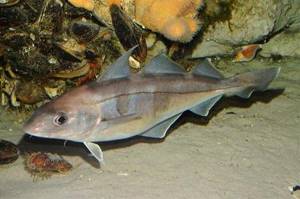
The body is slightly flattened on the sides. The back is dark in color with a purple tint, the sides and belly are silver. Although haddock is a small fish, it is popular among fishermen.
So, what kind of fish is haddock? This is a representative of the White Sea, which has unlimited fertility, which begins after reaching 8 years. A huge number of them live in Russian territorial waters, and in the White Sea there are noticeably fewer of them than in the south of the Barents Sea. Haddock prefers to lead a gregarious existence and lives at a depth of sixty to two hundred meters. It feeds on bottom invertebrates such as worms, crustaceans, and mollusks.
Fish world
The representation of marine inhabitants of the White Sea, in contrast to the neighboring Barents Sea, is more meager. Although about seventy species of fish can be distinguished here. They live at a depth of up to 30 meters, where there is food.
Fishing for cod, herring, salmon, flounder, and sea bass is widely developed here. Fishing for smelt from ice is very popular among residents of the White Sea shores.
Pacific herring are the most common schooling fish in this area. Navaga and Arctic cod enter the waters of the White Sea in winter to lay eggs. Cod representatives: cod, navaga and pollock spend the winter here. There are two species of flounder found in the White Sea. One of them - sea flounder - comes here from the Barents Sea to fatten. Another species is the polar flounder. She lives in the White Sea permanently.
Cod: description and hunting
Cod is considered one of the popular fish in the White Sea. Cod lives and spawns mainly in Kandalaksha Bay, where there is salt water. Unlike the Atlantic one, this species is smaller. Its length is approximately 60 cm, but mostly smaller individuals are found. In summer and early autumn, cod lives close to the shore. Larger specimens should be looked for near rocks that go into the sea. Small specimens can be caught near the rocky shore in shallow water.
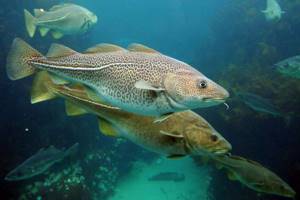
Local residents catch track from boats with ordinary gear, which consists of a strong fishing line with a diameter of approximately 0.7 mm. Cod is a schooling fish, and if you find a fishing spot, the catch will be very significant. The fish prefers sudden changes in the bottom topography. In addition, cod fishing is also possible from the rocks. To do this you will need a float tackle. The principle of fishing is the same as with a donk.
Varieties and features
What kind of fish belongs to the sea? These are predatory, garfish, flounder, herring, mackerel, and cod species. The sea white individual has a light color; the families differ in appearance. They are divided into round and flat varieties.
Flat fish
Flatfish include halibut, flounder, white fish, and tilapia. They have an unusual appearance, a flattened body. They grow up to 2 meters in length.
There are more than 30 species of flounder . It has a body flattened on both sides without stripes. The color of the upper part is bright yellow. Resident of the Black, Azov, Bering and Mediterranean seas, the Atlantic Ocean. Spawns in spring at depth. The weight of the fish can reach up to 3 kg. It has an excellent taste, which is why it is caught in huge quantities, and its population is declining.
Halibut, or sole, lives in the Atlantic and Pacific oceans, as well as in the Okhotsk and Barents seas. It is a predator, eating flounder, cod, pollock and shellfish. Life expectancy is about 30 years. It is caught in large quantities. Halibut happens:
- black,
- american arrowtooth,
- ordinary,
- Asian arrowtooth.
Tilapia is a freshwater species that lives on the bottom. Another name is king perch. Lives in tropical waters. It eats everything it comes across. This species is grown artificially in Africa, Asia and North America. It has great taste, lean meat and plenty of protein.
Round individuals
These individuals have a round, thick shape. The bones have a curved appearance. These include the following subspecies:
- cod,
- nelma,
- haddock,
- burbot,
- hake,
- striped bass,
- angler,
- grouper.
The cod family grows up to 1.7 m (depending on the subspecies). Lives in the Pacific and Atlantic oceans. Cod lives in schools and is very prolific. Individuals that have reached 3-6 years of age and weigh up to 10 kg are highly valued. Some specimens live up to a hundred years. Black cod is especially useful. It differs from other individuals in its black-metallic color.
Nelma is a large freshwater specimen of a silvery hue. The length can reach 1.5 m, and the weight reaches 50 kg. It feeds on small fish. Spawning occurs in the fall. The fish is very prolific and can lay up to four hundred thousand eggs.
Haddock is caught in very large quantities. Lives in the Arctic and Atlantic oceans. Grows up to 30 kg. It differs from other marine inhabitants by oval black spots on its head. It has lean meat and is considered a dietary product.
Burbot is similar in appearance to catfish and whitefish and is found in cool fresh water bodies of Europe and Asia. In Russia, it is distributed in the North (Polar Region, Yakutia - Belyanka River). In summer, it hides in burrows or under snags, where it waits for cold weather. It hunts only at night, so you need to fish for it at night. You can fish with spoons, bottom gear or girders.
Hake is a cod species that lives in the depths of salt waters. Reaches 40−50 cm in length. In terms of value, fillet ranks first among cod, it is considered a dietary product, contains many vitamins and little fat.
Striped bass lives in the Sea of Azov and the Atlantic Ocean. This is a predator that constantly moves from place to place. Fishing for it is unpredictable and requires preparation. The individual is caught using special means (for example, an echo sounder). The largest specimen caught was 37 kg.
Monkfish lives at a depth of up to two hundred meters, is inactive, and can grow to large sizes. The head is flat, taking up more than half of its body.
Another name for this northern fish is “European anglerfish.” Found in the Atlantic Ocean, Black and Barents Seas. It feeds on small fish. The fish is unattractive in appearance, but despite this, it is very tasty.
Fishing in the Arkhangelsk region
There is an opinion that only the lazy do not fish in this region. Hunting in the region is a favorite pastime not only for men. The process of fishing is increasingly attracting the female half of the population. Fishing in Arkhangelsk is popular both in summer and winter. There are several options to choose from:
- From the Northern Dvina embankment within the city. Amateurs can hunt for perch and ruff, but only experienced fishing experts can catch pike and whitefish.
- Izhmozero and Smerdye are forest lakes, the catch of which consists of bream, perch, roach, and bream. The advantage is the absence of cold wind on a frosty winter day.
- White Lake will greet you with sharp cold winds, strong currents and the indescribable beauty of its harsh nature. Fishing in such conditions will bring a lot of unforgettable impressions, supported by a good catch of smelt and navaga.
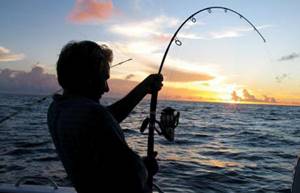
Fishing in Arkhangelsk in early spring will delight you with pike weighing three kilograms or more, which is caught on a spinning rod. By mid-April, the hunt for large bream begins. Worms are used as bait. They fish using a method that has been known for a long time - using the wire. In spring, fish are not fed. In early May, crucian carp come in schools and are caught with a feeder. By the middle of the month, the catch will include bream and crucian carp.
Fishing bases
Recreation areas with varying amounts of services for comfortable hunting are located near the White Sea. According to user reviews, the prices are quite affordable, with the exception of the rental fee for water transport. However, a ship may not be needed if you stop on the White Sea in Gridino. Fishing on rivers and lakes flowing into the sea will bring no less pleasure than on an open body of water. Fishing is allowed only after obtaining a license, the price for which can be clarified when booking a recreation center. Depending on the time of year and the preferences of the fish, fishing gear is selected.
When fishing from a boat or from the shore, you should choose the right place:
- quite a large number of different living creatures live under the steep cliffs;
- when fishing from a boat at a reservoir depth of about 8 meters, the hunt will be successful and will delight you with excellent catch;
- In coastal zones with a depth of no more than 30 meters, you can also get a notable catch.
When choosing water transport, you should pay attention to its reliability, the quality of the motor, the presence of an echo sounder, and a flat anchor.
The boat has been selected, the gear has been prepared, what to catch? On the White Sea, the catch amazes the imagination not only with its weight, but also with the variety of species of marine life.
- The lumpfish has very tasty caviar. The body of the fish is round in shape with tubercles and growths on the scales.
- Pink salmon is a strong and beautiful inhabitant of the sea. It enters rivers exclusively for spawning. It eats fry and crustaceans.
- Flounder feeds on capelin and invertebrates. It lives at the bottom of the sea and leads a gregarious lifestyle.
- Cod meat is tasty and tender. Most of the catches include individuals weighing no more than 900 g; larger specimens are practically never found. It prefers to eat small fish, shellfish and worms.
- The catfish is a scary-looking fish with a massive jaw and sharp teeth. It must be removed from the hook carefully, otherwise it may catch your finger. It feeds on starfish and mollusks. This is a solitary fish. The meat is fatty and tasty.
What kind of fish can you catch?
When choosing a fishing location, the first thing to consider is what kind of fish you want to catch. On the White Sea you can find:
- Cod is the most common fish that can be found in this region.
However, when fishing, it should be taken into account that the weight of the specimens encountered is significantly lower than that of fish in the store. The average weight of an individual that gets hooked is 800-900 grams. Cod meat is tender and tasty. According to local fishermen, specimens weighing more than 3 kilograms are not found in the sea. When catching cod, it should be taken into account that this predator has a rather large head; it feeds on worms, mollusks and small fish. - Haddock is somewhat similar to cod. A distinctive feature is the presence of black spots on the sides. The process of catching this fish is exactly the same as the process of hunting cod. Haddock moves in small schools. Therefore, if you run into a school, you can count on a pretty good catch.
- Striped catfish is a very strong, angry and scary-looking fish, with large and sharp teeth it can also become a catch. It should be taken into account that the jaw of this predator is massive and its teeth are sharp. Striped catfish feed on mollusks and starfish.
The fish should be removed from the hook carefully; it must first be pinned into the net, since next time it may grab your finger.Individuals of catfish found in the sea are not large; rarely a trophy specimen reaches 2 kilograms. The fish leads a solitary lifestyle. Therefore, it is quite difficult to catch more than 2 specimens in one place. The meat of this fish is tasty, it is quite fatty, but most of the fish found do not reach a weight of 1 kilogram.
- Flounder, whose eyes are located on one side, is also found in the White Sea. It feeds on invertebrates and capelin and lives in schools at the bottom of the sea. You can count on a good catch only during daylight hours.
- Pink salmon is a long-awaited catch for many fishermen who come to the White Sea. This fish is beautiful, quite strong, and has black spots on its tail. It should be noted that pink salmon enter rivers only for spawning. Males have fairly large fangs. This fish feeds on crustaceans and fry. The weight of the encountered individuals reaches 2 kilograms.
- Lumpfish is a round-shaped fish that has various bumps and growths on its scales. It attracts a lot of attention from caviar lovers. This product is famous for its taste. Lumpfish can be caught in the same way as cod.
- Salmon and brown trout are quite beautiful fish. The weight of an individual can reach large levels. The place for fishing is chosen near rivers, where salmon often enter.
The above information determines that in the White Sea you can catch fish that are usually not caught in rivers far from the seashore. At the same time, the catch can amaze not only with its weight, but also with the number of species, since marine inhabitants, unlike river inhabitants, differ significantly from each other in shape, size, and color.
Wild holiday
When planning a fishing trip on the White Sea, a savage should carefully prepare. Approximate list of equipment:
- navigator;
- tent;
- sleeping bag;
- anti-mosquito products;
- knife;
- fishing tackle: different types of bits, fishing lines, spoons;
- various baits;
- compass;
- matches;
- first aid kit with medicines and medical products;
- warm waterproof clothing;
- Food;
- kettle, thermos.
Winter fishing
A fishing trip to the White Sea in the frosty winter cold - isn't this a harsh romance that attracts real men? The most famous places are located in the north. It should be noted that winter fishing has its own characteristics:
- It is necessary to take into account the period of low and high tide. Fishing takes place in the coastal zone, and during low tide the fish leave.
- Fish are most often concentrated at the mouths of large rivers. These places are rich in food, so it is to these places that fish migrate.
- Access to the sea coast is often difficult due to snow drifts.
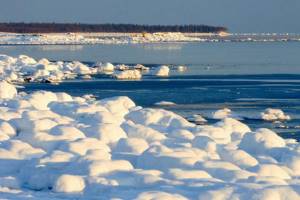
Winter fishing is usually carried out for predatory fish, so appropriate gear is needed. Local residents who live in coastal areas almost always know where the good bite will be and where the fish will move during the day. They pass this experience on from generation to generation. Therefore, it is best to ask the local population where it is advisable to go fishing.
Fishing
Solovki
The Solovetsky Islands are an archipelago located in the White Sea, and located at the entrance to Onega Bay. In terms of area, it is the largest in the White Sea, consisting of six large islands and hundreds of small ones.
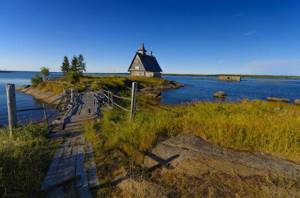
These islands, as well as the five-kilometer water area, are considered a specially protected area. Fishing here is sea and lake. On each island there are signs describing the fish that live in the reservoir. There will almost always be a catch. You can rent a boat at any hotel. The Solovetsky Islands are a unique example of the nature of the North, considered a historical monument.
The rivers flowing on the Kola Peninsula attract hunters like a magnet. The rivers on the Tersky coast flow into the sea and therefore you can catch salmon in them in winter. As soon as the ice breaks up, the fish migrate to the sea to gain weight. In terms of its diversity, fishing on the White Sea is recognized as one of the best in Russia.
To breed their offspring, salmon returns to the rivers. And the most amazing thing is that salmon always returns to spawn exactly in the river from which it left as a fry. The rivers of White Lake are divided into small and large, have many rapids, and there are also waterfalls. On the shores of Pomeranian reservoirs you can find a convenient place for fishing. Come fishing on the White Sea at any time of the year!
Harp seals
They stand out among the mammals that inhabit the White Sea.
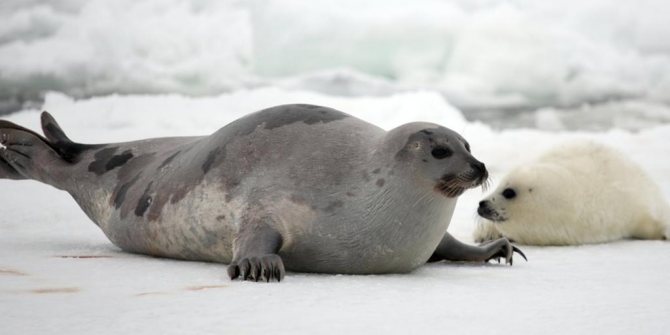
There are three populations of seals in the Arctic Ocean. One of them is located in the White Sea. In recent decades, this population has begun to decline. The reason for this is excessive mining and melting ice. In this regard, fishing restrictions were introduced, which stabilized the number of inhabitants of the White Sea - harp seals - at the level of a million individuals. Every year, at the end of winter or at the beginning of spring, a litter of seals appears in the White Sea, which amounts to 350 pups. Small puppies are called “squirrels” because they have a white color, visually indistinguishable from the color of ice.
Male seals have colors that distinguish them from other species: silver fur, a black head and a black line that runs from the shoulders to the sides. The color of females consists of a similar pattern, but it is paler and sometimes turns into spots. The length of these animals is 170-180 centimeters, weight varies from 120 to 140 kilograms.

